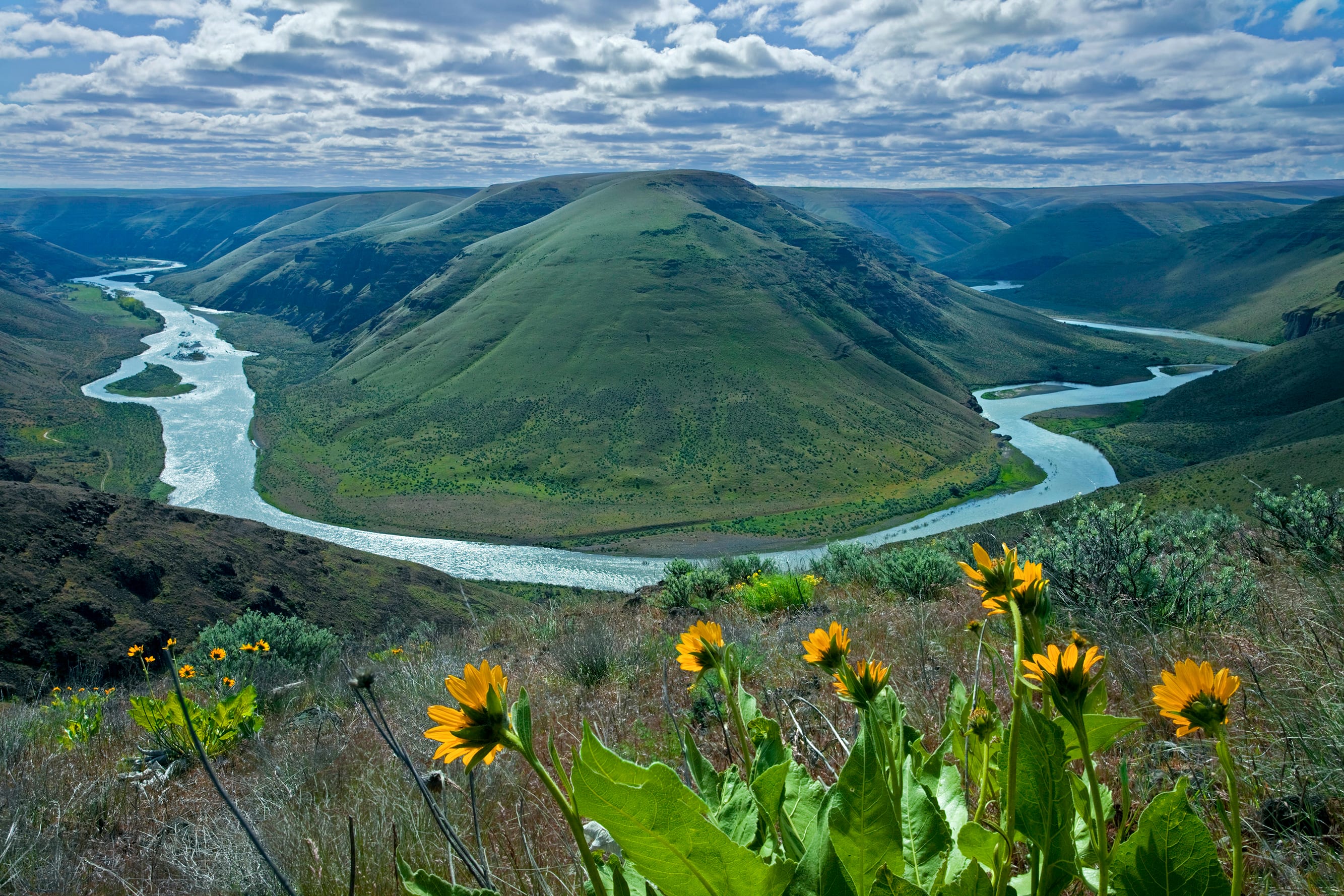Where to Float, Hike, Fish and Camp on the Lower John Day River

Oregon’s John Day River is the longest free-flowing river west of the Rockies. Its lower reaches, which flow through some of the most stunning river canyons in the West, are designated Wild and Scenic for 147 miles. The river is a stronghold for summer steelhead and spring Chinook salmon and is home to the largest herd of California bighorn sheep in Oregon. It also offers outstanding fishing, floating, hiking and camping in the rugged and scenic expanses of eastern Oregon’s sagebrush-steppe.
For recreationists, WRC’s 15-plus-years of conservation efforts have made river access on the lower river—which was mostly off-limits due to private property—far easier. To date, we have conserved four ranches and three public access points on the lower John Day, protecting over 31 miles of the mainstem and 67 square miles of land, all of it now accessible to the public.
In 2013, WRC created Cottonwood Canyon State Park, which is now Oregon’s second-largest state park. On top of protecting 16,000 acres of shrub-steppe, it provides unprecedented new access to a 16-mile stretch of the Wild and Scenic River corridor. In 2019, WRC conserved 10 miles of the John Day and nine miles of Thirtymile Creek. The effort protected the only boating access on a 70 mile stretch of the river and conserved a crucial portion of the most important steelhead spawning tributary on the lower river.
And, in the summer of 2020, WRC purchased the 4,100-acre McDonald’s Ferry Ranch (currently open for boating and fishing only), which contains 3.2 miles of river frontage, thousands of acres of sagebrush-steppe habitat and the lowest boating take-out on the river. (Below McDonald’s the river winds through 10 miles of roadless area before plunging over the un-runnable Tumwater Falls.)
Cottonwood Canyon State Park and Thirtymile Creek are both open to the public and well worth exploring—whether you are a rafter, hiker, birder or angler. Visiting Thirtymile Creek requires a four-wheel-drive vehicle, and the rugged six-mile road is closed to motorized vehicles from December 1 through April 15.
For those of you planning your next river adventure, here is a guide to the best way to visit and explore the lower John Day River.
BEST TIME TO VISIT:
Spring and fall are ideal, as summers can be brutally hot. The 4-wheel-drive road to Thritymile is only open April 16 through November 30.
WHERE TO FLOAT:
There are four sections of river along the lower John Day that can be floated individually or together (some as day trips, some as over-nighters). WRC’s efforts have delivered or improved public access to boat launches at Thirtymile, Cottonwood Bridge, Starvation Lane and McDonald's Ferry. Bureau of Land Management permits are required year-round for both day and overnight trips within the Wild and Scenic portion of the river (Service Creek to Tumwater Falls). Permits are unlimited except for certain date ranges during the spring and fall.
Segment one: Put in at Clarno and take out at Thirtymile for a 25-mile float. Five miles downstream from the Clarno Bridge, you’ll hit Clarno Rapids, which are rated Class 3 or 4 depending on water level.
Segment two: Put in at Thirtymile and take out at Cottonwood Bridge for a 44-mile float. This portion is mostly an easy stretch of Class I rapids through remote river canyon. (Read the Statesman Journal’s write-up on this newly accessible float trip, thanks to WRC’s conservation of two ranches at Thirtymile Creek, here).
Segment three: Put in at Cottonwood Bridge and take out at Starvation Lane for an easy 10-mile float. The day trip takes roughly four to six hours.
Segment four: Put in at Starvation Lane and take out at McDonald’s Crossing for a 10-mile float. Or, for a longer overnight trip, put in at Cottonwood and float all the way down to McDonald’s Crossing for a 20-mile trip.
WHERE TO HIKE:
Cottonwood Canyon State Park has roughly 10 miles of hiking trails, most of which are along the river. The Pinnacles Trail and Lost Corral Trail, which are both 4.3 miles one way, follow opposite sides of the river downstream. The Hard Stone Trail skirts the river for 1.5 miles upstream to a gentle John Day River whirlpool called Big Eddy.
WHERE TO FISH:
The John Day is known for its summer steelhead (best from October through December) and non-native smallmouth bass fishing, ideal in spring and summer. Cottonwood Canyon State Park offers excellent bank access for both. Check the latest regulations at ODFW. The John Day has been closed for steelhead fishing in recent years due to low numbers.
WHERE TO CAMP:
Dispersed camping is available near the river at Thirtymile Creek. There are also a number of established campsites between Thirtymile and Cottonwood Bridge for rafters and boaters to stay at during multi-day float trips.
At Cottonwood Canyon State Park, there are 21 campsites and four cozy, rustic cabins that are all available via reservation only.
